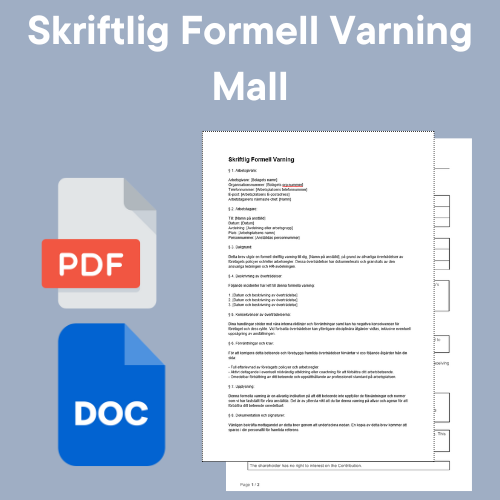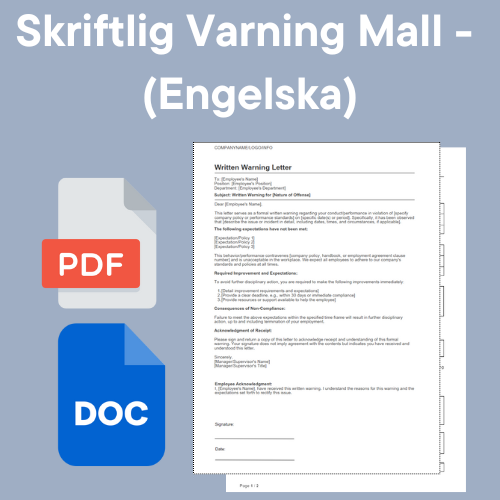Step by step: How to draw up a written warning?
Share
How to Issue a Written Warning in the Workplace
Table of Contents
- Identify the Cause
- Gather Evidence and Documentation
- Prepare the Warning Letter
- Communicate with the Employee
- Deliver and Get Confirmation
- Follow up and Support
- Conclusion
Identify the Cause
Before issuing a written warning, make sure you have a clear and factual reason. Common reasons include:
- Regular absence or late arrival.
- Mismanagement of duties or lack of performance.
- Inappropriate behavior in the workplace.
- Violation of the company's policies or guidelines.
Document the incidents or behaviors that warrant the warning, as well as any previous verbal warnings or attempts to correct the problem.
Collect Evidence and Documentation
Ensure that you have concrete and accurate documentation of the events or behaviors that led to the warning. This may include:
- Reports from superiors.
- Time logs or follow-up reports.
- Any complaints from customers or colleagues.
- Photographs or video recordings (if applicable).
Prepare the Warning Letter
A warning letter must be clear and factual. The following elements should be included:
- Date of issue.
- The employee's name and position.
- Description of the incident or behavior leading to the warning.
- Any previous history or warnings.
- The company's expectations and the measures required to correct the situation.
- Consequences if improvement does not occur.
- Prompt to contact a specific person (e.g. HR or immediate manager) for support or questions.
- Signature of both employer and employee to confirm receipt.
Communicate with the Employee
Once the warning letter is prepared, schedule a meeting with the employee to discuss the issue. Explain the reason for the warning, and go through the details of the letter. Give the employee the opportunity to express his view on the matter.
Deliver and Get Confirmation
Hand the letter to the employee at the meeting, and make sure the person understands the content. Ask the employee to sign a receipt to acknowledge receipt of the warning. If the employee refuses to sign, make a note of this and have a third party witness the handover.
Follow up and Support
After a written warning is issued, it is important to follow up and offer support. Schedule regular meetings to monitor progress and provide resources or guidance that can help the employee improve their performance or behavior. Document all follow-up meetings and progress for future reference.
Conclusion
Issuing a written warning is a formal step that requires accuracy and respect for workplace guidelines. By following this step-by-step guide, employers can ensure that the process is transparent and fair, while giving the employee the opportunity to make the necessary changes to meet expectations.


